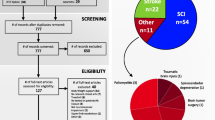Abstract
The goal of this research is to assess how powered exoskeleton-training for 5 h per week over 20 weeks can change gait parameters to increase walking speed for chronic SCI. Gait parameters include Center of Mass (CoM) excursions, walking velocity, initial double stance time (IDS), single stance time (SS), terminal double stance time (TDS), swing time (SW), and spatial parameters such as step length, step width and stride length. Exoskeleton training had a significant effect on walking velocity due to specific temporal spatial gait parameters (IDS, TDS, Step and Stride Length) and increased stability (CoM).
Access this chapter
Tax calculation will be finalised at checkout
Purchases are for personal use only
Similar content being viewed by others
References
Esquenazi, A.: The ReWalk powered exoskeleton to restore ambulatory function to individuals with thoracic-level motor-complete spinal cord injury. Am. J. Phys. Med. Rehabil. 91(11), 911–921 (2013)
Kressler, J.: Understanding therapeutic benefits of overground bionic ambulation: exploratory case series in persons with chronic, complete spinal cord injury. Arch. Phys. Med. Rehabil. 95(10), 1878 (2014)
Ramanujam, A., Cirnigliaro, C., Pilkar, R., Forrest, G.F.: Muscle activation during robotic powered exoskeleton assisted walking: case series. Front. Neurosci. (submitted for publication)
Acknowledgments
CSCR13IRG013 New Jersey Commission on Spinal Cord Research.
Author information
Authors and Affiliations
Corresponding author
Editor information
Editors and Affiliations
Rights and permissions
Copyright information
© 2017 Springer International Publishing AG
About this paper
Cite this paper
Ramanujam, A. et al. (2017). Training Response to Longitudinal Powered Exoskeleton Training for SCI. In: González-Vargas, J., Ibáñez, J., Contreras-Vidal, J., van der Kooij, H., Pons, J. (eds) Wearable Robotics: Challenges and Trends. Biosystems & Biorobotics, vol 16. Springer, Cham. https://doi.org/10.1007/978-3-319-46532-6_59
Download citation
DOI: https://doi.org/10.1007/978-3-319-46532-6_59
Published:
Publisher Name: Springer, Cham
Print ISBN: 978-3-319-46531-9
Online ISBN: 978-3-319-46532-6
eBook Packages: EngineeringEngineering (R0)




